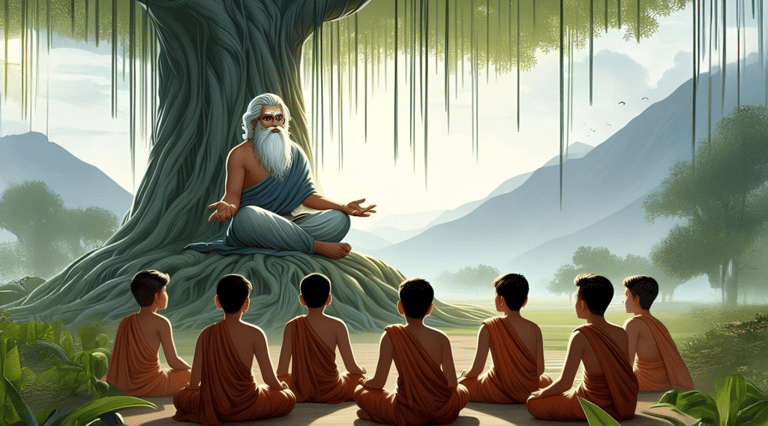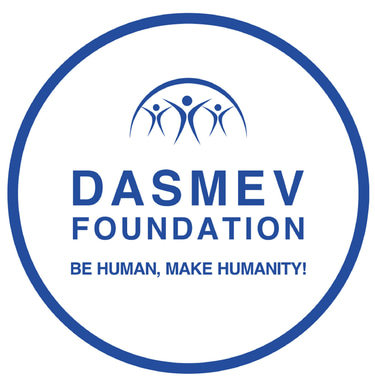Reviving Vaidik Education: A Holistic Approach for Future Generations
Discover how Gurukul by Dasmev Foundation blends ancient Vaidik education with modern practices, fostering holistic learning through yoga, Sanskrit, and value-based teachings to nurture responsible citizens in India.
By Dasmev Foundation
9/21/20253 min read


Introduction
In a rapidly changing world, where technology advances by leaps and bounds yet many hearts and minds feel disconnected, there lies a timeless treasure in India’s past — Vaidik (Vedic) education, with its spiritual wisdom, ethical grounding, holistic growth and deep sense of purpose. At Dasmev Foundation, we believe the future belongs to those who are not only technically competent but also morally anchored, spiritually aware, and socially responsible. Reviving Vaidik education in a form adapted to modern learners can help shape future generations who can balance success with service, innovation with integrity.
What is Vaidik Education?
Vaidik education refers to the system of learning rooted in the Vedas, the Upanishads, and other ancient Indian scriptures. Its essence goes beyond rote learning; it cultivates:
Holistic growth: Physical, intellectual, moral, spiritual dimensions
Character and virtue: Dharma, self-discipline, humility, truthfulness
Self-reflection and inner awareness through practices such as svadhyaya (self-study), meditation, mindfulness
Close teacher-student or Guru-Shishya relationship, which includes mentorship, moral example, personalized guidance
Integration with nature, respect for the environment, sustainable living
Life skills and ethics rather than just job-oriented knowledge
Why Revive Vaidik Education for Modern Learners?
Here are several reasons why this revival is timely and necessary:
Loss of meaning & values: Modern education often focuses heavily on exams, skills, jobs — less on character, integrity, meaning. Many young people feel empty or stressed despite material success.
Mental health crisis: Practices like meditation, mindfulness and spiritual grounding can help reduce anxiety, build resilience, improve wellbeing.
Environmental & ethical challenges: The Vaidik ethos of respect for nature, sustainable livelihood and simple living can guide us in confronting climate change, ecological degradation, and unsustainable consumption.
Cultural identity & roots: Knowing one’s heritage can give pride, clarity, a sense of belonging — it helps anchor identity in times of rapid cultural change and globalization.
Balanced development: A system that educates not only mind but also heart and body ensures more well-rounded individuals, capable of wisdom, empathy, leadership.
Challenges to Adaptation
Reviving Vaidik education is not without challenges. Some of the issues are:
Perception & relevance: There can be skepticism that ancient knowledge is irrelevant or impractical. Modern examinations, careers, global competitiveness demand skills that Vaidik systems must also address.
Infrastructure & teachers: There is a shortage of trained teachers well-versed both in Vedic knowledge and modern pedagogy. Facilities, residential Gurukuls etc. require resources.
Curriculum design: How to balance traditional subjects (Vedas, Sanskrit, philosophy, rituals, etc.) with modern subjects (math, science, languages, technology)? How to ensure both are strong without overloading students?
Inclusivity: Ensuring access across socio-economic status, caste, gender. Traditionally some systems were exclusive; modern revival must be inclusive.
Standardization & recognition: Ensuring qualifications are recognized, aligning with national/state boards or equivalents so students can smoothly transition to higher education or jobs.
Vision for the Future: What Can Be Achieved
If we apply this approach, here is what the future can look like:
A generation of students who are rooted in cultural identity, understand their heritage, and feel proud of it.
Young people who are not only skilled in tech, science, languages, but also grounded in ethics—honesty, compassion, responsibility.
Improved mental health: less burnout, more clarity, inner peace.
Communities more connected to nature, more sustainable in their practices.
A balanced society: where modernization does not mean loss of values; where ancient wisdom complements scientific progress.
Educational institutions that serve as beacons of holistic learning, not mere exam factories.
Conclusion
The task of reviving Vaidik education is both urgent and inspiring. For Dasmev Foundation, this is not about turning back the clock, but about bringing forward the best of our tradition into the present so that future generations can walk with confidence, compassion, and clarity. With thoughtful design, investment in teachers, inclusive access, and courage to build new models, we can help nurture individuals who shine—in knowledge and character.
Let us together embrace Vaidik education as a means of “Be Human, Make Humanity.” The journey may require patience, resources, and innovation — but the harvest will be generations transformed, societies renewed, and a world more aligned with truth, harmony and purpose.
